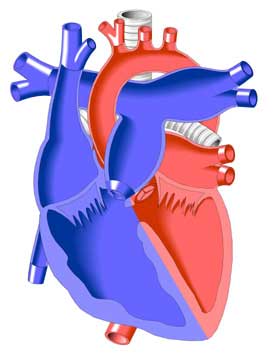 |
|
Absent Pulmonary Valve and the Adult
Patient
Patients lacking a pulmonary valve will have persistent pulmonary
insufficiency (leakage). While some patients remain symptom-free,
problems with right heart function and anatomy may develop over
time.
For example, dilatation (enlargement) of the right ventricle can
lead to arrhythmias and other symptoms. Eventually, these patients
may require valve replacement or repair operations.
Absent pulmonary valve often causes significant dilatation of
the pulmonary arteries, which persists into adulthood. However,
if there is no bronchial obstruction, this abnormality may cause
no symptoms and require no treatment. In cases where obstruction
does occur, the pulmonary arteries may be reduced in size surgically.
Some patients will continue to experience respiratory difficulties
after surgery. This may be due to the lingering effects of the
compression of bronchi (air passages) in the lungs by the enlarged
pulmonary arteries before the repair was made.
Those absent pulmonary valve patients who have undergone valve
replacements should be monitored for pulmonary valve efficiency.
Most surgically implanted valves will last 10-20 years before
they wear out, become obstructed, or lose efficiency. When their
function becomes impaired for any of these reasons, replacement
becomes necessary.
Adult patients with absent pulmonary valve should take steps to
avoid the development of pulmonary artery hypertension (high pulmonary
blood pressure) as this will aggravate the symptoms associated
with pulmonary valve inefficiency. This means that these patients
should avoid tobacco products and should pursue prompt treatment
of sleep apnea and enlarged adenoids or tonsils. |
|